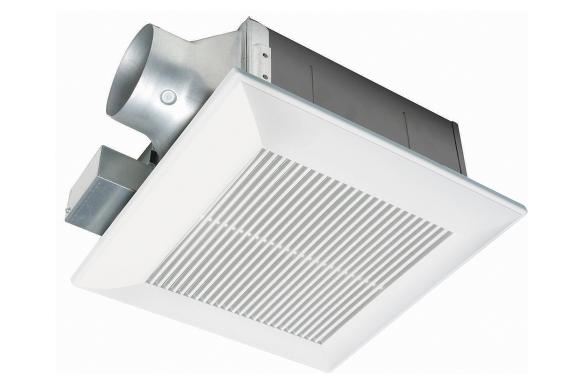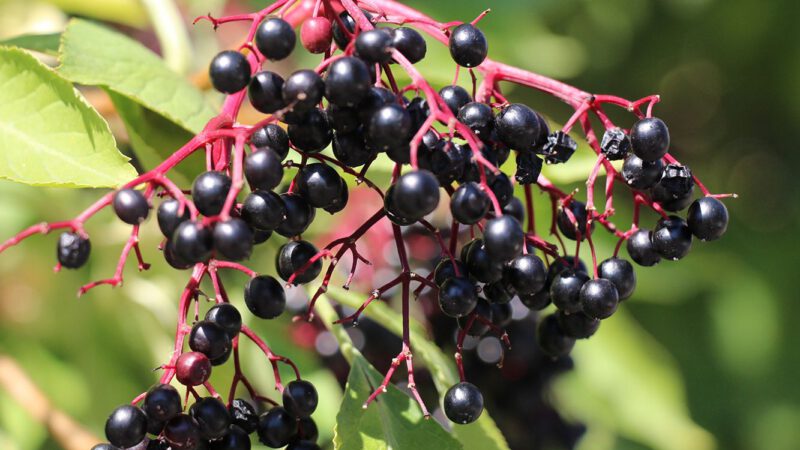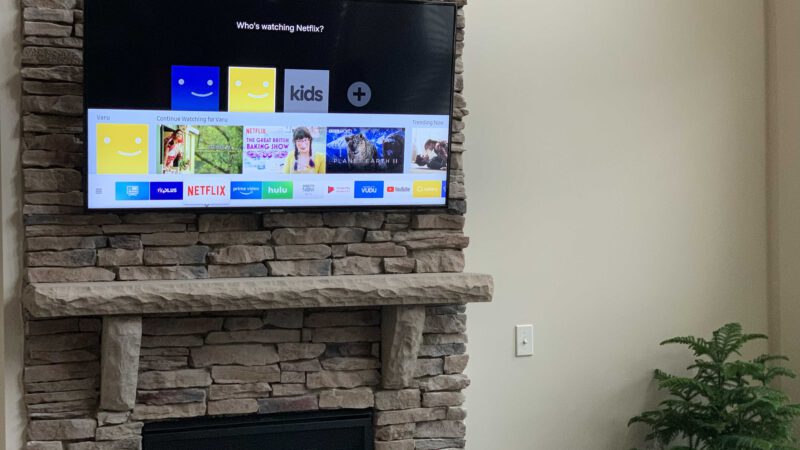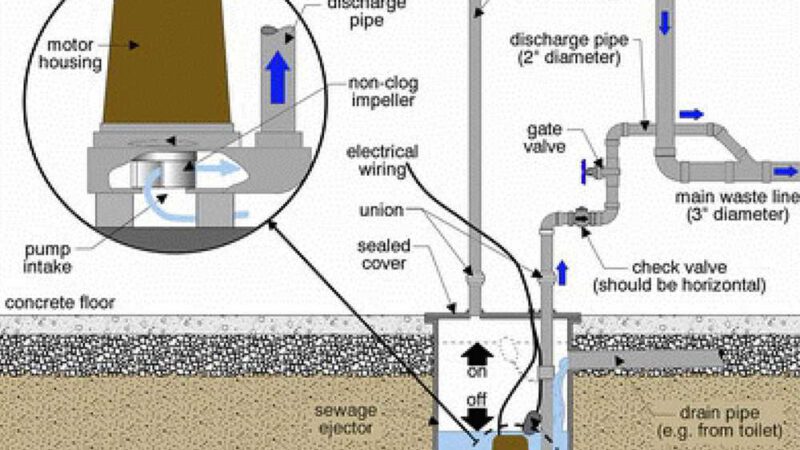Types of Flat Roof Material Options
Flat roofs are the most economical type of roofing. They offer great protection to your home or commercial building against weather elements while keeping the building’s interior dry and warm. Although flat roofs provide you with a lot of benefits, they also have their disadvantages.
Therefore, knowing what type of flat roofing material you’re going to use when building your own house is very important. This will help you make better decisions about maintenance and replacing an old flat roof system. It will also help you communicate and relate better to potential roofing contractors as you’re looking for the best roofing company for your project.
Here are the most common types of flat roofs:
Build Up Roofs or BUR
Build-up roofs or BUR type of flat roofs consist of a series of layers applied over the substrate. These layers, usually asphalt and felts, are necessary for getting watertight protection from your roofing system. Like other types of roofs, these systems will last you a long time if you do regular maintenance on them and get rid of any moisture build-up.
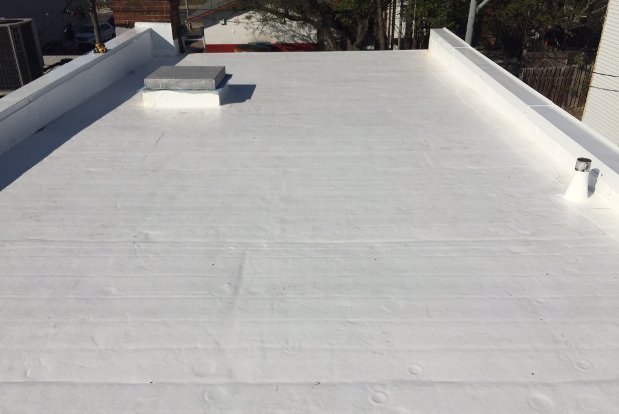
Image credit: https://www.homeadvisor.com/
Bur flat roofs are often referred to as tar and gravel roofs. They’re made of layers of materials bonded together by asphalt tar and hot tar to a liquid state and then mixed with gravel to ensure the mixture maintains its strength and durability.
This flat roof material option has solved the low-pitch roof problem for ages, a challenge that asphalt shingles could never handle. If you’re also concerned about fire safety in your building, then built-up roofings can meet higher fire ratings.
Pros of Built-Up Roof
Safety Against Fire
Built up roofings are known to be more rugged than other flat roof material options. They provide greater protection against heavy snow loads and high winds. Since they can handle these weather conditions, you don’t need to worry about damages, leaks, or breakage.
Most of all, built-up roofs are very safe against fires because their layers are made of non-combustible materials. They won’t increase the risk of fire or suffocate it completely.
Longevity
Built up roofings last longer because of the thick layers and the waterproofing materials used. This means you will spend less on maintenance and repairs for your roof.
Multiple layers also prevent leaks and tears, thanks to their heavy-duty construction. It won’t turn into a major problem that requires replacement or extensive repairs when a leak arises since you can spot it easily.
Cons of Built-Up Roof
Weight
The main downside to a built-up roof is its weight. It’ll be difficult for you to install one yourself because it will require a lot of time and effort to lift all those layers, particularly if you need to reach high altitudes. The materials used are also heavy, such as the gravel that’s designed to protect against fire.
Modified Bitumen Roofs
Modified bitumen roofing looks similar to built-up roofing, only that they use a single layer of adhesive roofing material, making it feasible for DIY installations.
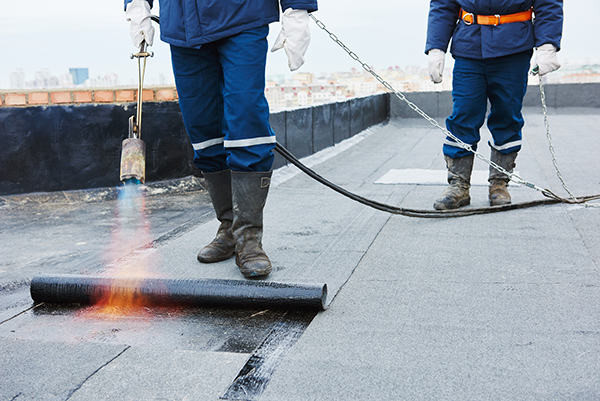
Image credit: https://coxroofing.com/
Modified bitumen roofs are only made of two layers and piles. These include a base sheet and a cap sheet. Both base waterproofing layer and a surface layer bonds to a material that resembles regular asphalt shingles.
dvantages of Modified Bitumen Roof
esthetics
You can find a number of modified bitumen roofing designs that mimic the traditional asphalt shingle roofs. This means that you can easily select a variety of materials to match your building exterior, which may have parts covered by asphalt shingles.
Easy to Install
The installation process of modified bitumen roofing is relatively the same as traditional asphalt shingles. This also means you can easily find a contractor for this project.
Insulation and Energy Efficiency
Because of its dark color or black, modified bitumen roofings absorb heat from sunlight. This makes it more energy-efficient than traditional roofing materials such as metal roofs that reflect this heat to the environment.
Cons of Modified Bitumen Roofs
Torch Down Systems
The torch-down systems can be a fire hazard. That’s why it’s not recommendable to install torch-down modified bitumen roofs on occupied buildings.
Durability
Another downside of modified bitumen roofing is that it’s not as durable and resistant to foot traffic and blown debris as other flat roofing materials. They also last about 10 to 20 years before they need to be replaced.
Fragility
These flat roofing materials are very fragile compared to other roof types, which are more resistant to hail and falling branches. When installers try to walk on your roof to put it in, it’s more fragile to break down.
EPDM Rubber Roofing
EPDM rubber roofing is an affordable solution for flat roofs. It’s also designed to last many years without the need for repairs or replacement, but it can get damaged by severe weather conditions like strong winds and hail. EPDM is a very durable synthetic rubber roofing membrane.
Rubber roofs are easy to recognize and are installed in two basic ways: ballasted or weighted down with a smooth river stone and adhered or glued down. The adhered rubber roofs are easy to spot since they’re black and are stretched over an insulation board or fiberboard.
Pros of Rubber Membrane Roofs
Easy Maintenance
Leaks in the rubber membrane roof can be easily repaired at a very cheaper price. Finding these leaks is also easy and straightforward.
Easy Installation
The rubber membrane material comes in a large single-layer roll, making it easy for the roofing contractor to work with. Thanks to its elastic and flexible nature, you also don’t have to use blowtorches to seal the seams together.
Resistance to Elements
The rubber is elastic, meaning it will naturally expand in the summer and contract in the winter. It can also withstand extreme temperatures without wear. Plus, rubber is fire retardant and naturally impact resistant.
It’s Affordable
The average installation price per square foot is around $2.50, making it more affordable than flat roofing systems.
Cons of Rubber Membrane Roofs
Shrinkage
While expandable, the rubber does shrink through time. This may lead to insufficient sealing and leaks, which will cost you additional money for repairs and maintenance. If left untreated, it could also cause damage to your other roofing systems, such as the flashing and insulation. It’s also harder to patch up compared to other materials like TPO or PVC.
Thermoplastic Membranes PVC or TPO
A thermoplastic roofing membrane is a more durable roofing system compared to rubber membrane roofs. It will be white or grey, but it can also come in other colors. There are two types of thermoplastic membrane roofing. These include polyvinyl chloride PVC and thermoplastic olefin TPO.
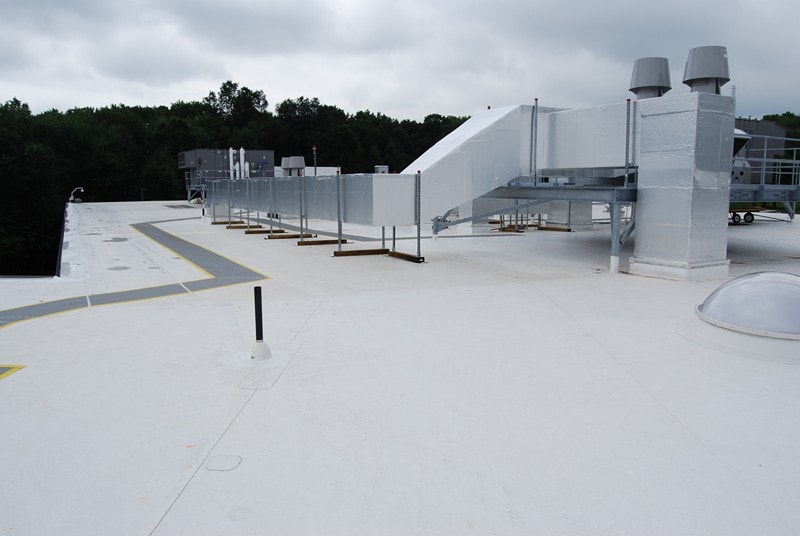
Image credit: https://www.chaffeeroofing.com/
PVC roofing is the third most-produced synthetic plastic polymer. It’s also easy to install, thanks to its flexibility. If you’re looking for the sturdiest membrane among the two, then PVC is the right choice. On the other hand, TPO roofing is considered a more eco-friendly variation of the thermoplastic membrane roof. It’s best at UV absorption and flame resistance.
Pros of TPO Roofing
Cost-Effective
Like PVC roofs, TPO roofs come in at a more budget-friendly installed cost of about$3.50 per square foot.
Energy Saving
White coatings can reflect heat and keep the surface temperature lower than that of a dark roof.
Easy Maintenance
You don’t have to pressure wash this roofing material because the single-ply roof membrane’s surface is laminated. It’s very difficult for algae and fungus to grip in.
Lightweight Material
With its single-ply nature, this lightweight material can perform well over low slopes. It weighs an average of half a pound per square foot, making it an excellent choice for older structures that cannot withstand the pressure and load of a built-up roof.
Cons of TPO Roofing
Takes Longer to Install
You will need to order new tools for this product, but don’t worry, it is still a far less expensive material to install than metal roofs.
Spray Polyurethane Foam Roof
A spray foam roof begins with a layer of high-density polyurethane foam sprayed from a wand or sprayer. After that, the contractor will spray a layer of waterproof elastomeric topcoat. This roofing type will often have a grey or white finish.
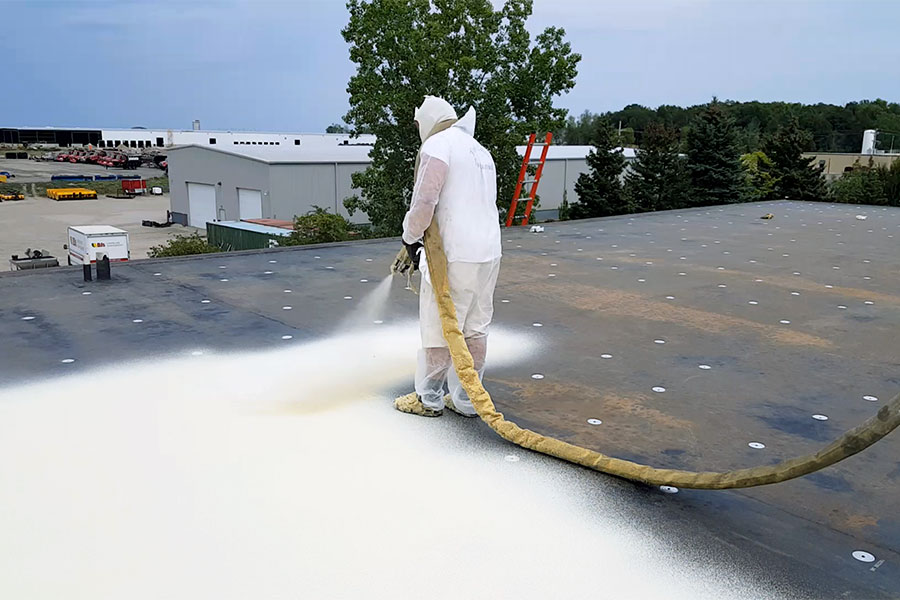
Image credit: https://www.americanweatherstar.com/
Pros of Spray Polyurethane Foam Roof
Easy to Install
This type of roof is very easy to install. You can expect to pay about $1.15 per square foot for this type of foam roofing material without topcoats.
Cons of Spray Polyurethane Foam Roof
Expensive Top Coat
The downside to this type of roof is that it is the most expensive to install. Some homeowners have also reported having problems with bubbles after installation.
Metal Flat Roof
This type of roof is a great option if you want a long-lasting solution. The metal roofs come in many different colors and styles so that they can blend in with your home’s exterior design. Metal roofing thrives in dry, warm climates.
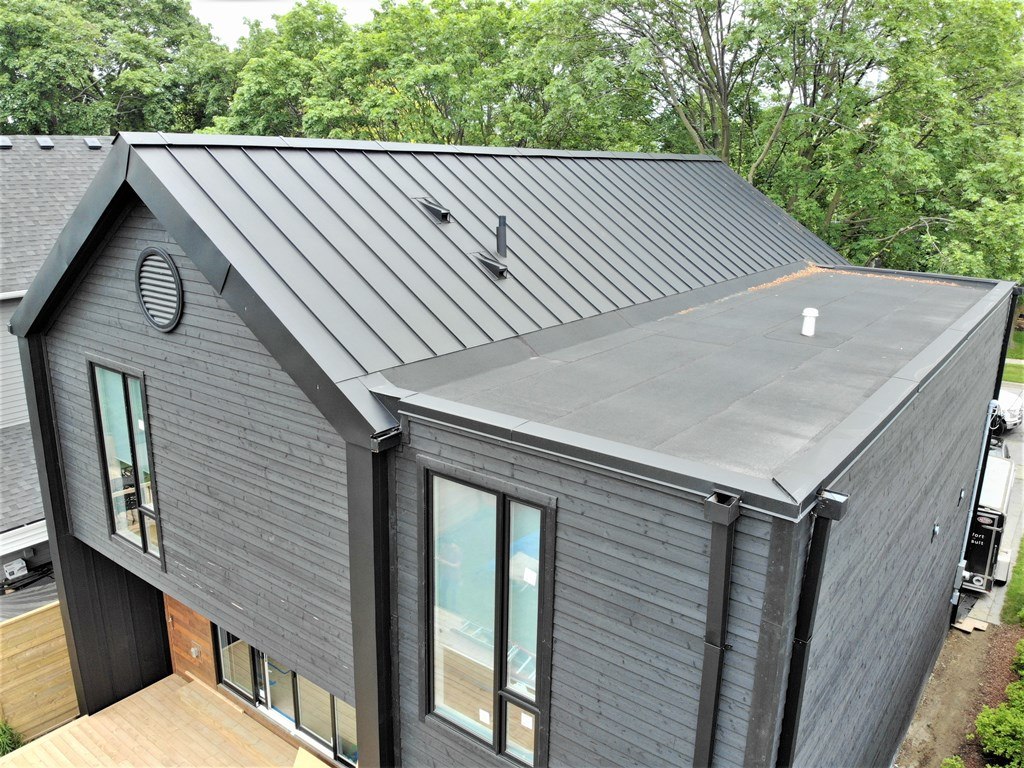
Image credit: https://roof-experts.ca/
The most used material is always aluminum because of its malleability. You can also choose other metals such as tin, copper, steel, and zinc.
FAQs on Different Types of Flat Roof Material Options
What is the best material to use for flat roofs?
This will depend on your budget and style, but PVC roofing is considered the best flat roof material.
What type of roof is a flat roof?
A flat roof is a roof that is almost level with many types of sloped roofs.
Final Thought on Different Types of Flat Roof Material Option
As you can see, there are several types of flat roof material options available. These flat roofing offer a few perks that even commercial building owners can enjoy. Before making any purchase decision, make sure you consult with a reputable flat roofing contractor so you can make the best choice for your house.
The post Types of Flat Roof Material Options appeared first on Kitchen Infinity.
Did you miss our previous article…
https://www.ilovethelovekitchen.com/?p=780

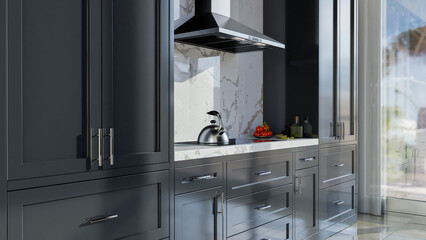
![13 Top Manufacturers of Luxury Vinyl [LV] Flooring](https://www.ilovethelovekitchen.com/wp-content/uploads/2021/12/Vinylwoodfloor-GettyImages-1086734442-54734c8c0a9a40f681ce97fa7deac657-1-800x450.jpg)
